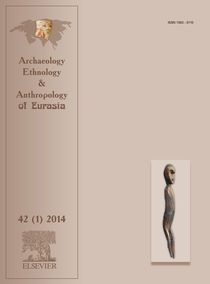
|
Archaeology, Ethnology & Anthropology
of Eurasia
42 (1) 2014
|
Annotation:
The Pleistocene Peopling of the North: Paleolithic Milestones and Thresholds Horizons in Northern Eurasia.
Part I: Lower Paleolithic Antecedents
N. Rolland.
Human occupation of northern Eurasia high latitudes entailed coping with severe bioclimatic circumstances
and Ice Age cycle fl uctuations. Resolving this “adaptability paradox” required depending on cultural, rather
than biological means. Paleolithic evidence indicates culture historical developments of considerable time
depth, long-term adaptive stages, and thresholds in the “peopling of the North.” It began with Lower Paleolithic
populations expanding into temperate and continental Eurasia, becoming fully actualized during the Middle and
Upper Paleolithic. The Middle Paleolithic formative stage constituted a human biogeographic realm overlapping
signifi cantly with the Mammoth-Steppe Biome faunal complex. Part I identifi es issues, time perspectivism, culture,
foraging adaptation, and human biogeography concepts. Lower Paleolithic occurrences, initial occupation episodes
are surveyed and discussed.
Keywords: Adaptive constraints, culture, time perspectivism, Mammoth-Steppe Biome, early dispersals evidence.